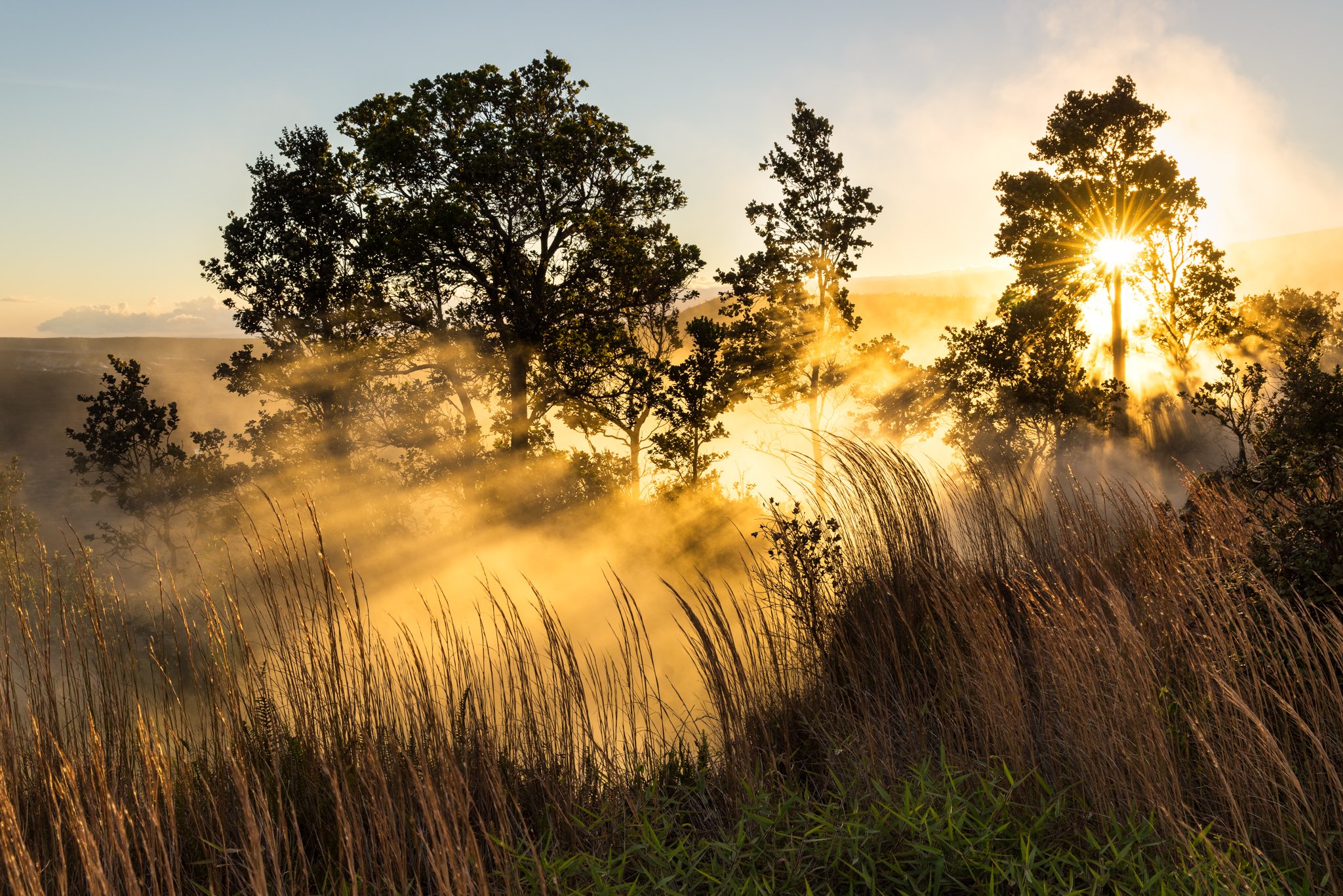It is no secret that Hawaii is a piece of paradise in the middle of the Pacific Ocean. The 50th and most recent state of the United States of America (it received statehood on August 21, 1959), Hawaii is the northernmost island group in Polynesia and the only U.S. state not located in the Americas, since it is actually part of Oceania. It is also the only U.S. state that is entirely composed of islands. Its eight main islands are, from northwest to southeast: Niihau, Kauai, Oahu, Molokai, Lanai, Kahoolawe, Maui and the Island of Hawaii. The last one, often referred as the “Big Island”, is the archipelago’s largest island; it is larger than all the other Hawaiian islands combined.
Obviously, Hawaii is a very popular destination for tourists and surfers, thanks to its lush environment, tropical climate, beautiful beaches and, of course, waves. But its oceanic surroundings and active volcanoes, especially on the Big Island, also make is a dream for scientists – biologists and volcanologists in particular.
And, of course, it is nothing short of a photographer’s dream as well. So when I had the opportunity to spend a week exploring the Big Island of Hawaii with my friends Colby Brown, Varina and Jay Patel and a group of other photographers, I didn’t think twice before jumping on a plane. And I can say these seven days in Hawaii were well worth spending more than 30 hours in planes and airports from the heart of Europe to Kona and back home, as well as the 12 hours jet lag. And I would do it again tomorrow.
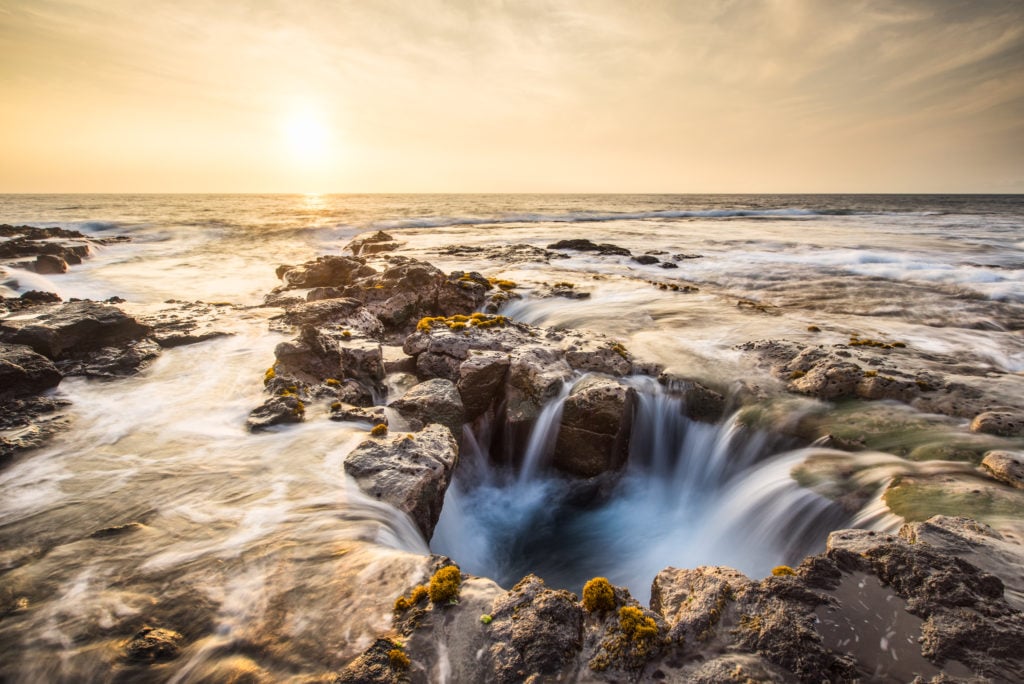
There aren’t a lot of white sand beaches on the Big Island of Hawaii. The island is built from five volcanoes that erupted one after another over the millennia. For this reason, the shore is mostly stones; this is the reason why you won’t see as many surfers as on the other islands of the archipelago there. Because of the volcanic ground, you’ll be able to see beautiful blowholes: sea caves that grow towards the land and expose themselves towards the surface into vertical shafts, from where water can blast when a wave comes in. When the wave goes back though, the water is sucked back in the blowhole and leaves an open hole in the shore’s surface.
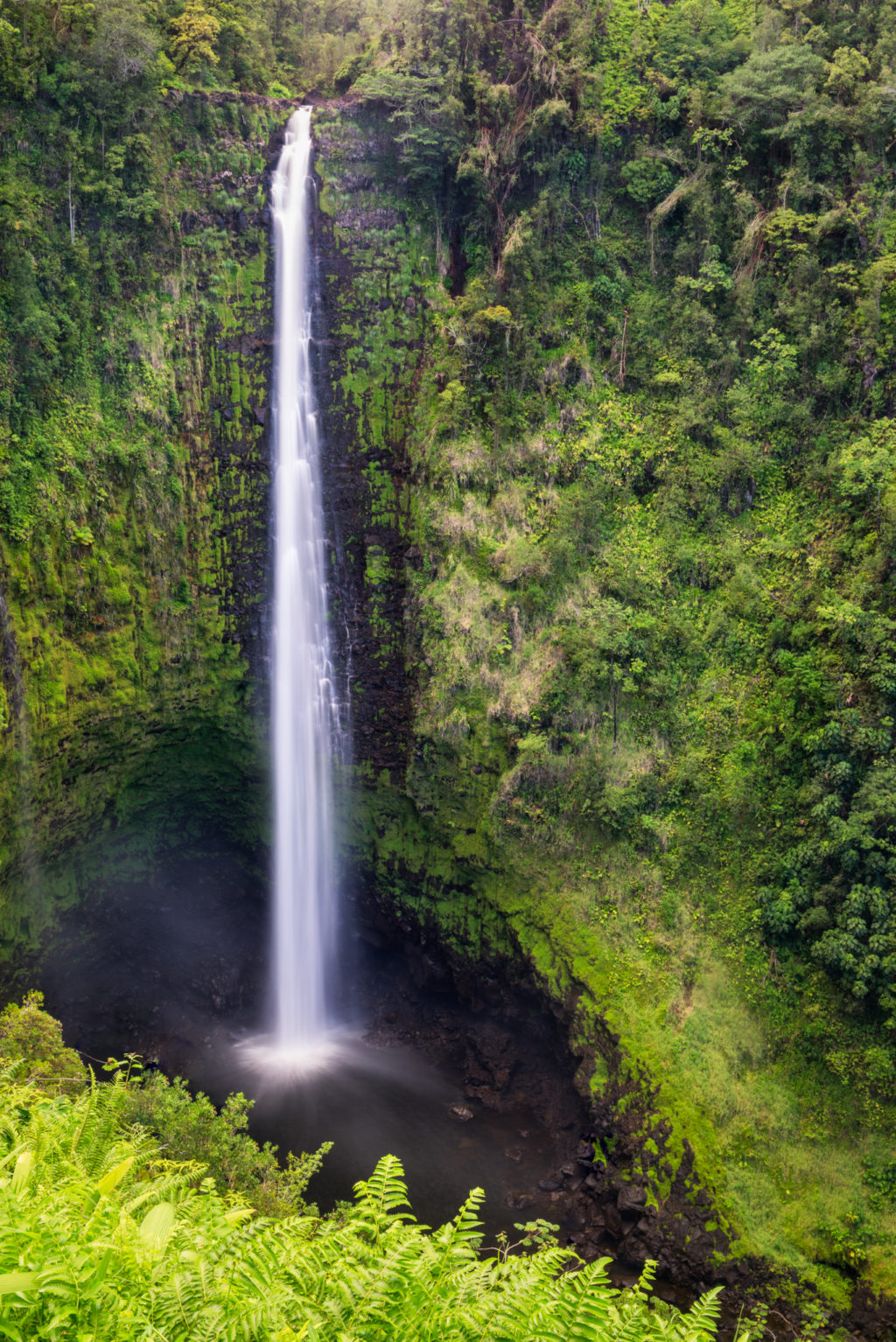
The Big Island is famous for its luxurious wilderness, especially on the east side of the island. The hike to Akaka Falls, through a lush rainforest filled with bamboo groves and wild orchids, will give you a good overview of what the vegetation looks like. Akaka Falls is a 422-foot tall waterfall located about 11 miles north of Hilo. Its name comes from the Hawaiian language and means “split”. The water of the Kolekole Stream indeed plunges into a deep gorge surrounded by vertical cliffs.
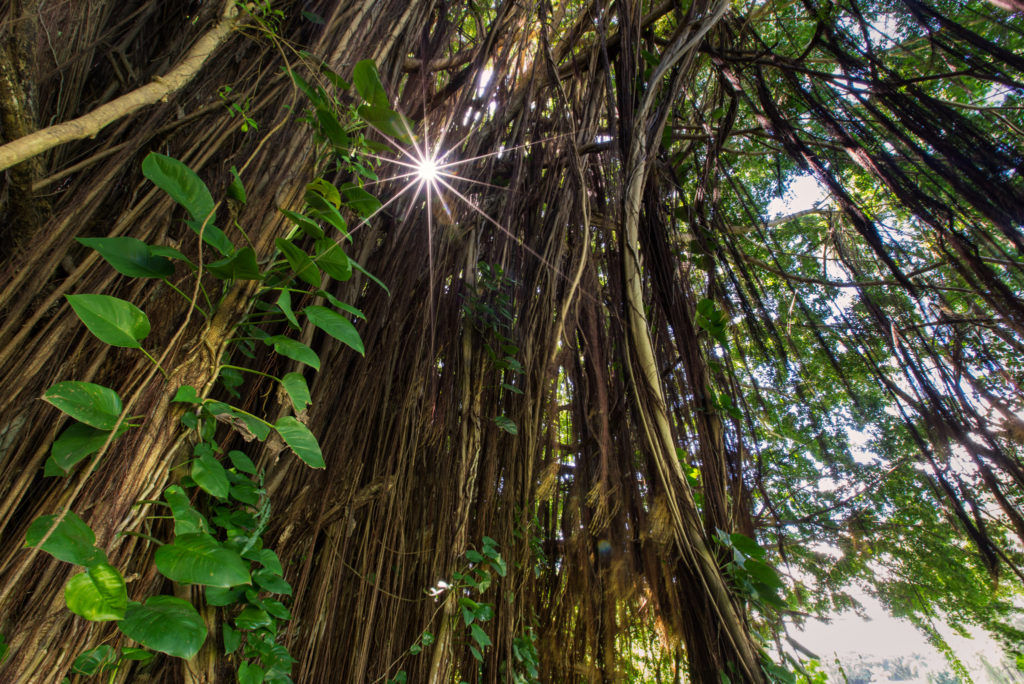
Banyan trees are another good example of the Big Island’s vibrant vegetation. A banyan tree is a fig that starts life when its seeds germinate in a crack or a crevice of another tree. They have characteristic aerial prop roots that can spread out laterally and grow into thick woody trunks that cover a wide area. Old banyans can be huge and look like a whole forest with every trunk indirectly connected to the main trunk.
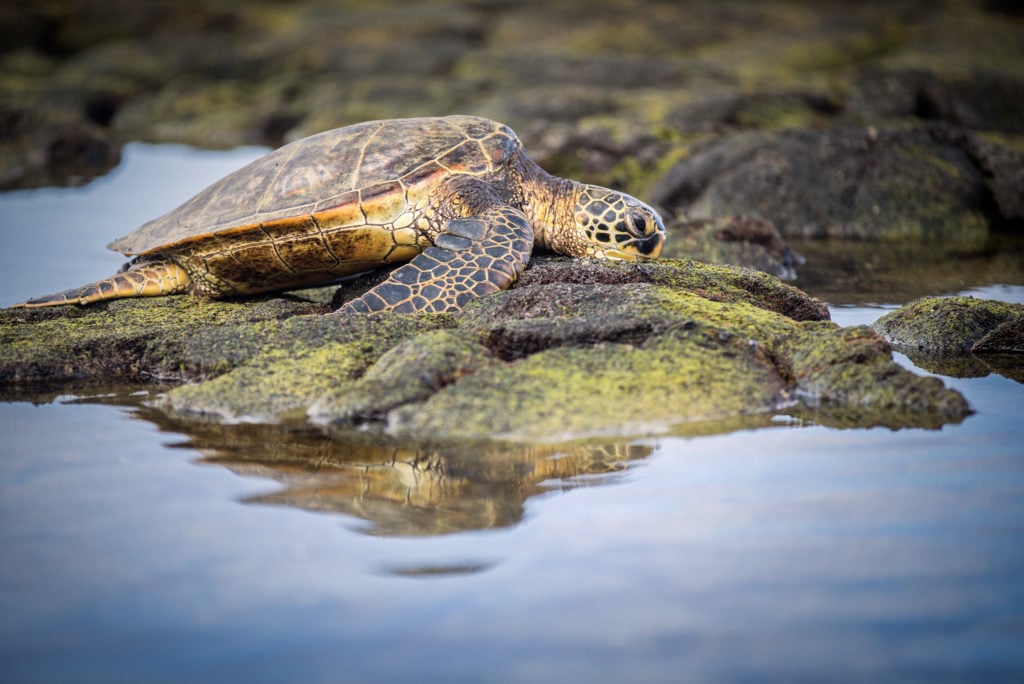
The green sea turtle is one of Hawaii’s fauna icons. This gentle vegetarian turtle, weighing up to 350 pounds and measuring up to four feet, can be found throughout the whole archipelago. One interesting behavior of the Hawaiian green sea turtle is its fondness for basking in the tropical. It is a protected animal; listed as threatened since its population has dramatically decreased over the past few decades.
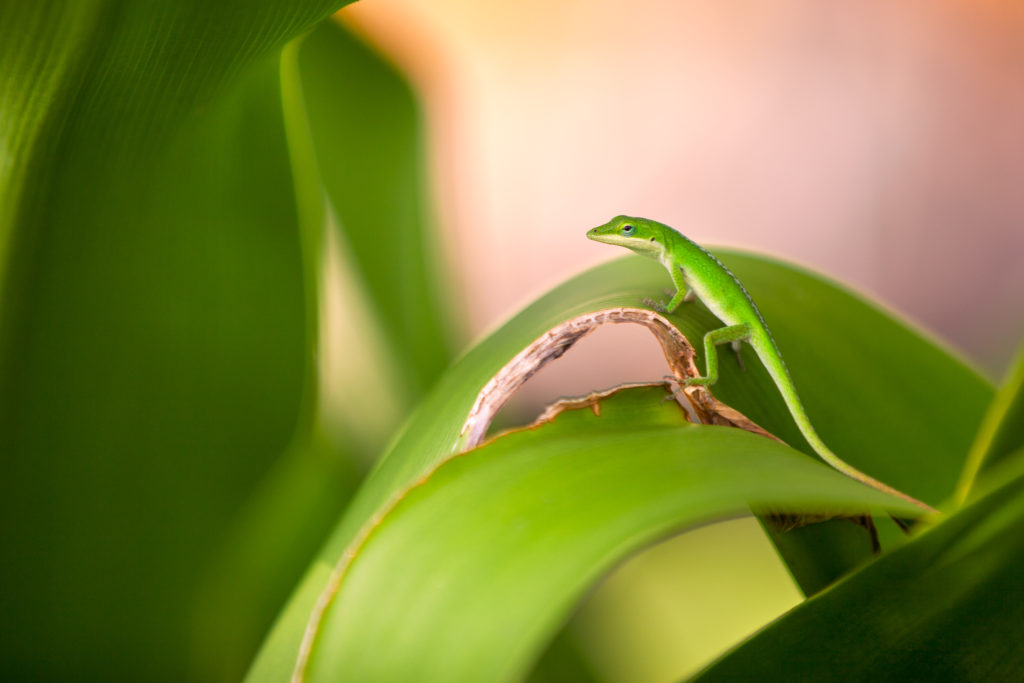
Geckos will often spring out when you least expect it. You will find these friendly, big-eyed, green lizards pretty much everywhere! There are more than 1,500 different species of geckos worldwide. They are unique among lizards in their vocalizations; their name comes from the sound the animals make.
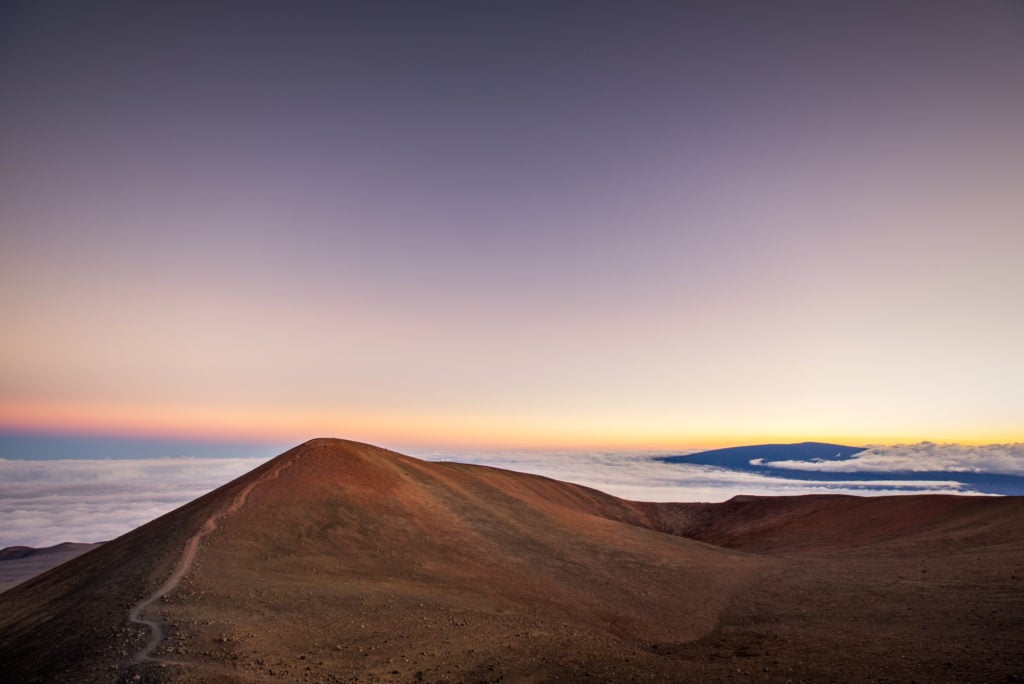
Mauna Kea is the highest point in the state of Hawaii. It is the world’s tallest mountain from base to summit, but most of it is under water. When measured from its oceanic base, Mauna Kea is over 33,000 feet tall, but it actually stands 13,802 feet above sea level. It is a dormant volcano that last erupted about 4,500 years ago. The summit is one the most important land-based astronomy sited in the world, thanks to extremely favorable observing conditions.
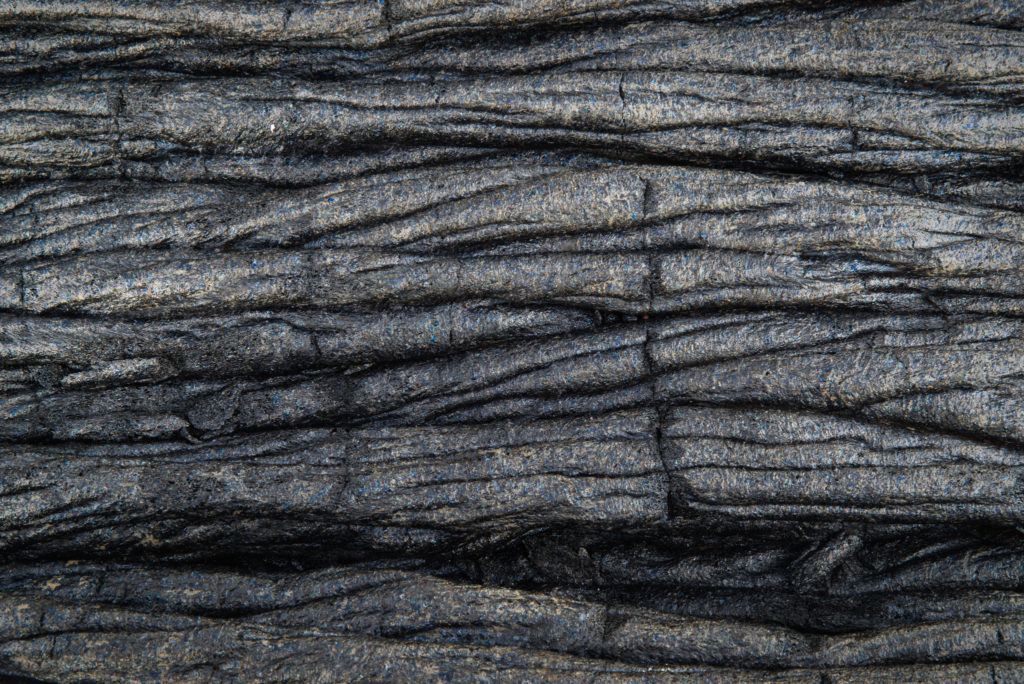
Since Hawaii is basically a huge volcano, one just has to take a look down at the ground to see volcanic rock. Most volcanic rocks are very dark, but they can look very different, depending on the lava’s composition and type of flow on the ground. This type of lava is called pāhoehoe and typically advances as a series of small lobes and leaves a ropy surface when solidified.
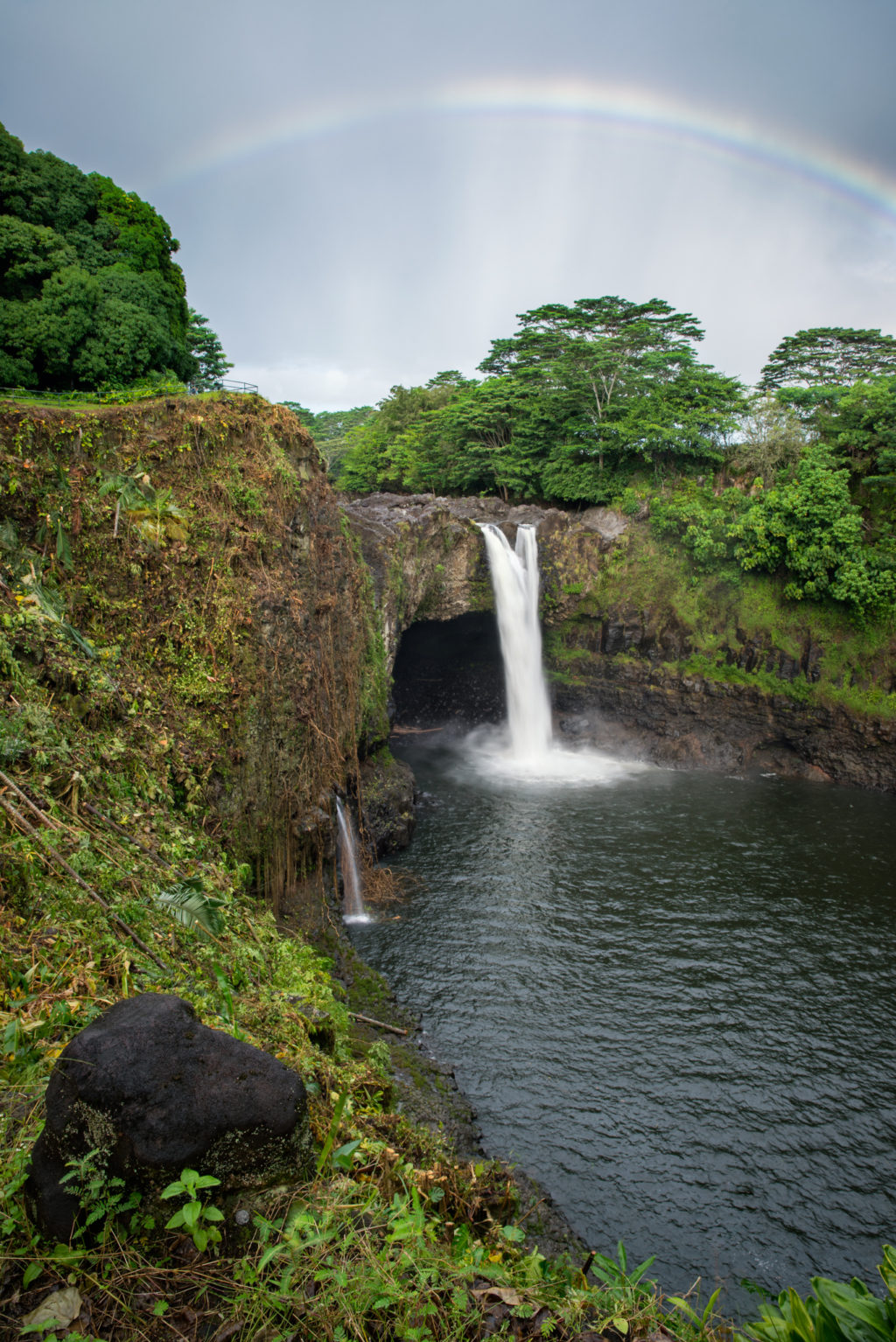
Another famous waterfall on the Big island of Hawaii is Rainbow Falls. It is located in Hilo, on the east coast, and is 80 feet tall. The water flows over a natural lava cave which is, in the Hawaiian mythology, the home to Hina, an ancient very attractive goddess who flew to the moon because she was tired of being pursued by men.
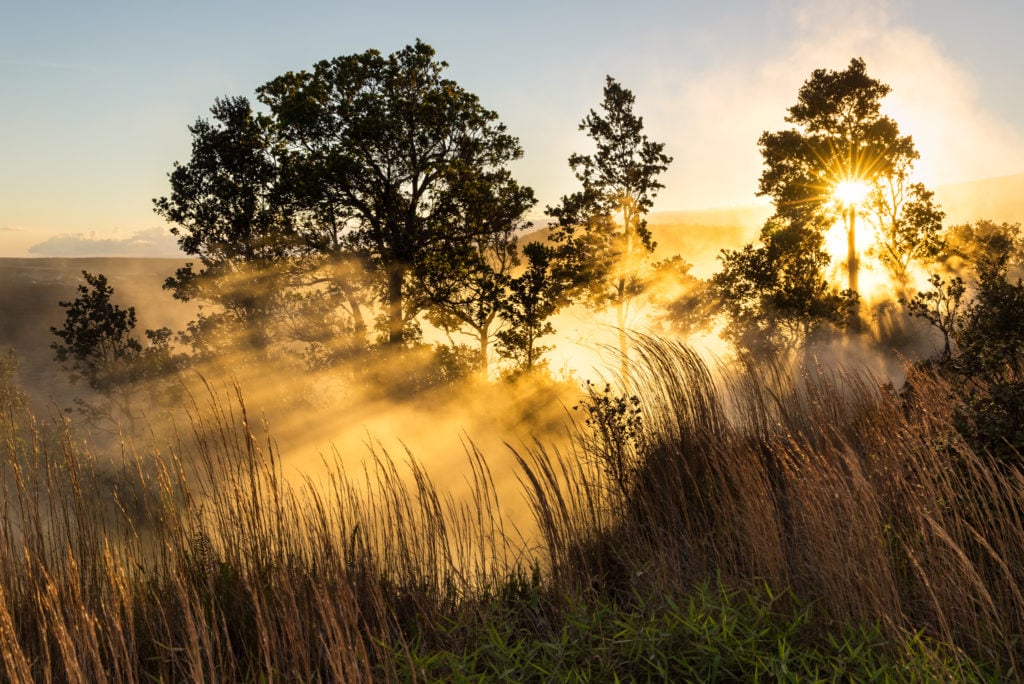
Volcanoes National Park is definitely one of the highlights of the Big Island. It encompasses two active volcanoes: Mauna Loa and Kilauea. The park offers stunning volcanic landscapes and is a scientist’s heaven. There are places in the park where the underground is so hot that water keeps evaporating, which creates ethereal scenes like this one.
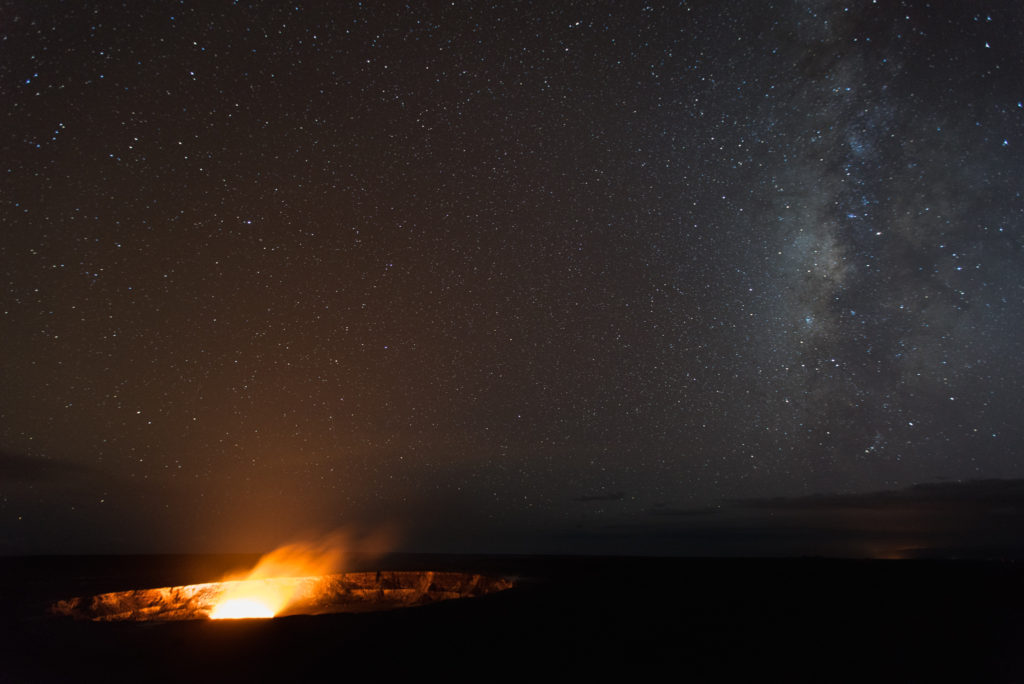
Kilauea, in Volcanoes National Park, is one of the world’s most active volcanoes. It is between 300,000 and 600,000 years old. Its name, in the Hawaiian language, means “spewing”, referring to its frequent outpouring of lava. Its current eruption dates back to 1983 and is one of the longest-duration eruptions in the world. In Hawaiian mythology, its crater, called Halema‘uma‘u, is the body and home of Pele, goddess of fire, lightning, wind and… volcanoes.
I learned a lot from my time on the Big Island of Hawaii. But probably the most valuable lesson I learned was that 7 days was not nearly long enough to discover all of incredible scenes that the island has to offer. I will be back, but this time, with a flecible ticket back to Belgium.
See more from Sébastien Beun on his website, Facebook, and Instagram.
Start planning your trip to the Big Island on the Go Hawaii website.
